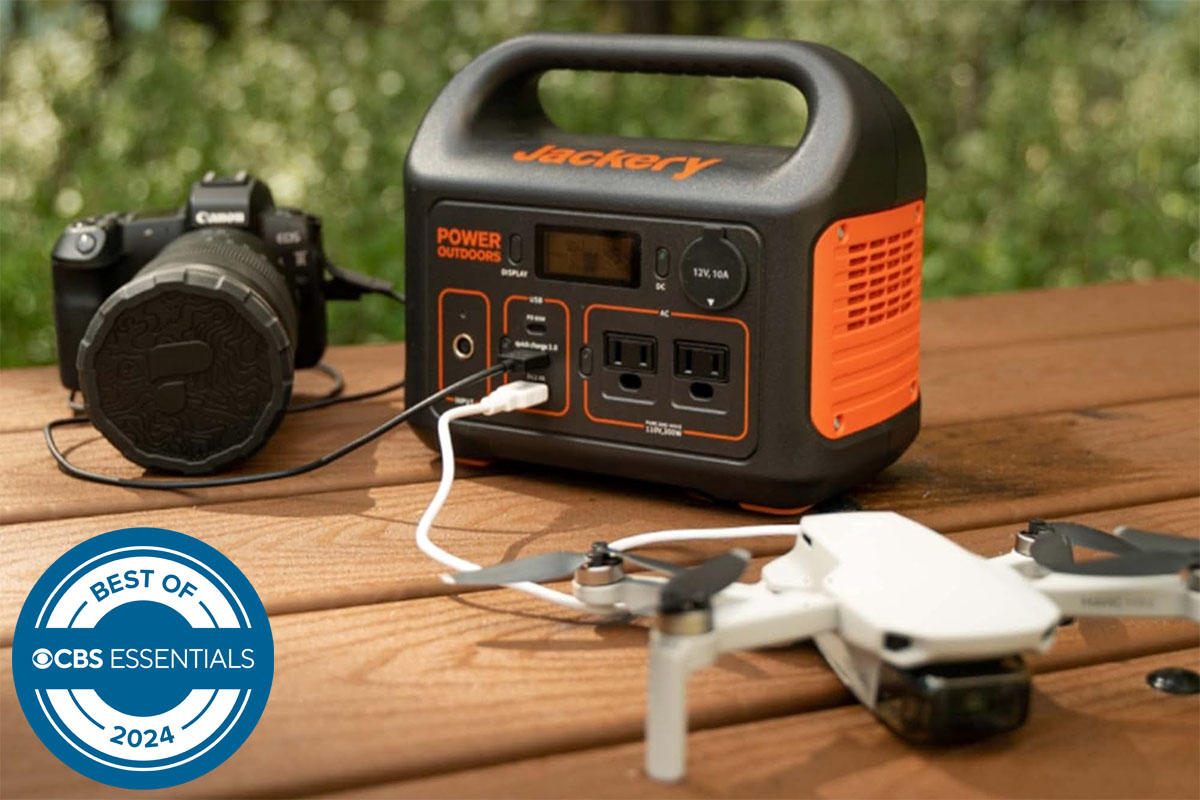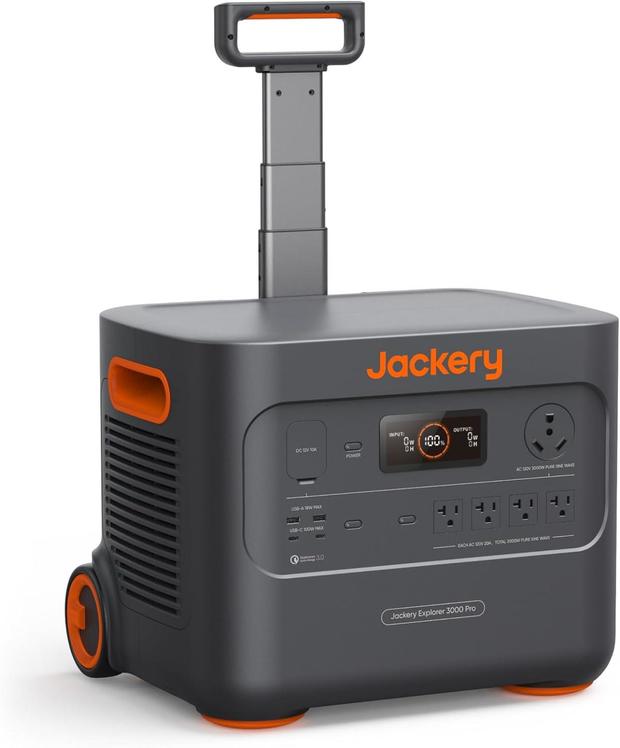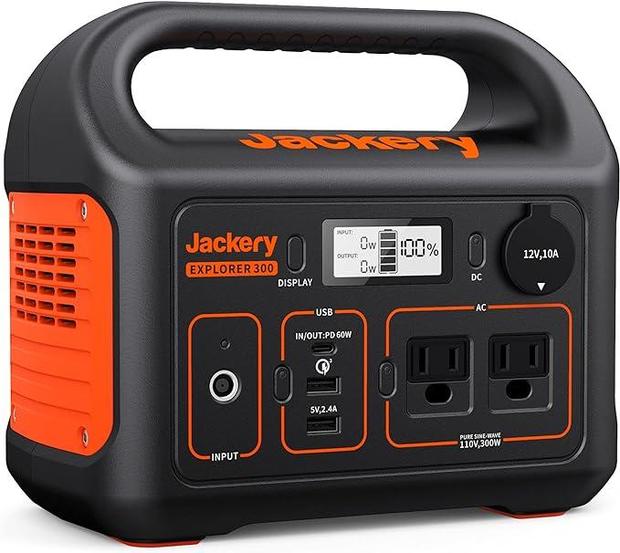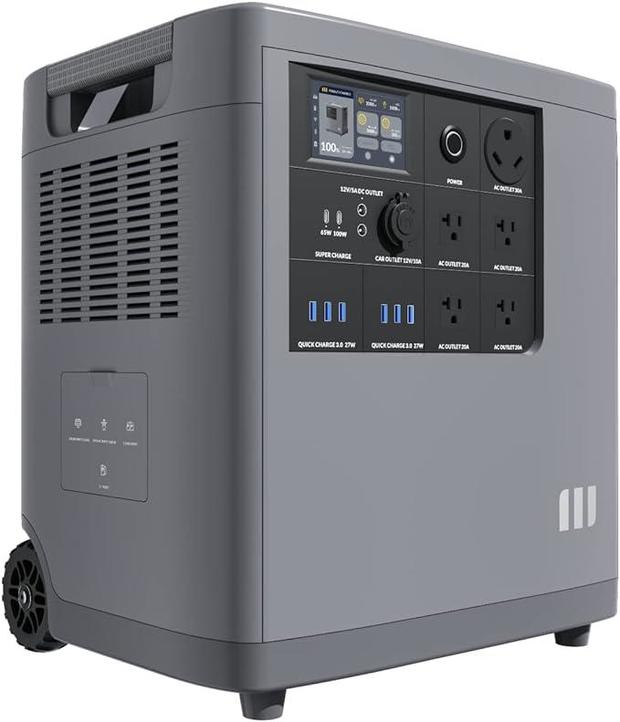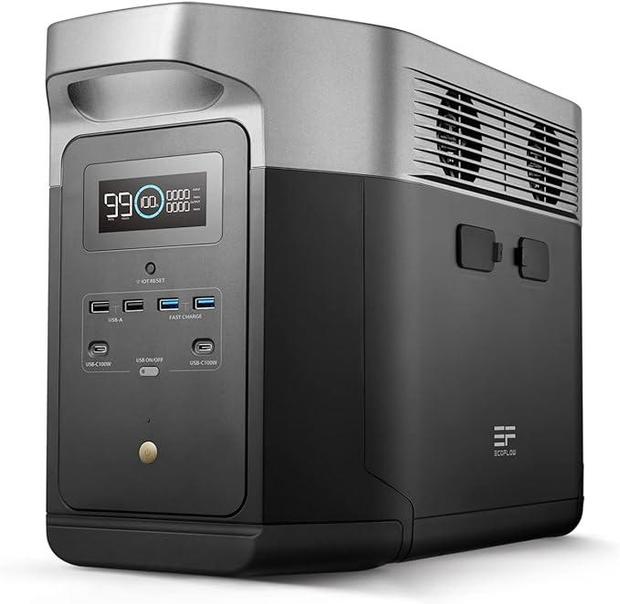Hurricane season is here. Prepare with the best emergency power banks of 2024
Losing power can be frustrating. Being without electricity means no air conditioning, for one thing, and that's unequivocally awful. Storms, hurricanes, heatwaves and unexpected rolling blackouts can knock out electricity right when you need it most. There's a way to make sure you're prepared now that we've entered the hottest time of the year. Rather than spending thousands of dollars on a whole home generator, an affordable emergency power bank can be a lifesaver.
Power banks are portable and provide backup power to charge devices like phones, laptops and more during summer storm-related outages, or when you're just out and about and need a quick boost. Some of the best power banks even have solar charging capabilities to stay powered up when you're off the grid.
Whether you need to know about emergency power banks, the latest TVs, TV soundbars, computers, smartphones, tablets, home projectors, or any other types of consumer technology, you can turn to our in-house tech team for the most informative, timely and accurate info. Below, check out our favorite emergency power banks for the next time you find yourself without electricity.
What is the best emergency power bank?
An emergency power bank is a large, portable rechargeable battery. It can keep appliances, computers, mobile devices, lights and other equipment functional for hours or even days. These power banks typically include multiple three-prong power outlets, USB Type-A and USB Type-C ports. Regardless of where you live, an emergency power bank is something every household should have. And they're particularly useful for RVers and people who enjoy camping or tailgating as well.
- Best emergency power bank overall: Jackery Explorer 3000 Pro
- Best budget emergency power bank: Jackery Explorer 300
- Best expandable emergency power bank: Mango Power E Home Backup and Portable Power Station
- Best emergency power bank for a home office: EcoFlow Delta Max
- Best basic emergency power bank for most households: Oupes 600W Portable Power Station
Note that a portable power station may qualify for the Residential Clean Energy Credit, which essentially rebates you 30% of the purchase price of new, qualified clean energy products such as battery storage technology. See the IRS website for more details.
Best emergency power bank overall: Jackery Explorer 3000 Pro
Capacity: 3,024Wh (Watt-Hours) | Power Output: 3,000-watts | Voltage: 120 | Recharge Time (via AC Outlet): 2.4 hours | Number of Outlets: 4 | Number and Type of Ports: 2x USB Type-A, 2x USB Type-C, 1x AC TT-30P | Smartphone App Control: Yes | Battery Type: Lithium | Dimensions: 18.6 x 14.1 x 14.69 inches | Weight: 63.9 pounds | Cycle Life: 2,000 | Optional Accessories: Solar panels, Extra battery packs
Need power in a pinch? The Jackery Explorer 3000 Pro has got it. This power bank recharges using solar panels for generating clean energy. It's a great emergency power source during a blackout, too. Plus, this system offers more than a dozen safety features.
While it's a bit on the heavy side, it's nicely designed with wheels and a handle, so you can position it where it's needed and then remotely control its operation using your smartphone.
The Explorer 3000 Pro was made for powering multiple devices at once. You get four traditional power outlets, USB ports and a collection of other ports. And it's 3,034Wh capacity can power a full-size refrigerator for up to five hours, a television for more than 35 hours, or keep your laptop and other home-office gear functioning for days.
The Explorer 3000 Pro is easy to set up and maintain. The display helps you manage your power consumption in an emergency or whenever you're off the grid. And when you need to recharge this power bank, simply plug it into an AC outlet for about 2.4 hours, or use the solar panels to recharge the battery in less than four hours.
Regularly $2,799, the Jackery Explorer 3000 Pro is on sale at Amazon for $2,149 with a limited-time coupon.
Best budget emergency power bank: Jackery Explorer 300
Capacity: 293Wh (Watt-Hours) | Power Output: 300-watts | Voltage: 110 | Recharge Time (via AC Outlet): 2.5 hours | Number of Outlets: 2 | Number and Type of Ports: 2x USB Type-A, 1x USB Type-C, 1x 12V DC (10A) | Smartphone App Control: No | Battery Type: Lithium | Dimensions: 9.1 x 5.2 x 7.8 inches | Weight: 7.1 pounds | Cycle Life: 500 | Optional Accessories: Solar panels
If you want to ensure your devices stay fully charged during a power failure, or want to power a few LED lights, the Jackery Explorer 300 is a viable and very affordable option.
For less than $300, you get a power bank with a 293Wh capacity that can support up to six devices at once using a single, portable and lightweight device that can be set up in any room or used outdoors to provide power during a tailgating party, while camping or in an RV.
If you want to generate clean energy, instead of recharging the Explorer 300 using an AC power outlet, take advantage of its optional solar panels. During a power outage, the Explorer 300 could recharge your smartphone up to 16 times, if this were the only thing you used it for.
Regularly $279, the Jackery Explorer 300 is on sale at Amazon for $199 after instant coupon.
Best expandable emergency power bank: Mango Power E home backup and portable power station
Capacity: 3.53 kWh (Kilowatt-Hours) | Power Output: 3,000-watts | Voltage: 120 | Recharge Time (via AC Outlet): 1.5 hours | Number of Outlets: 4 | Number and Type of Ports: 6x USB Type-A, 2x USB Type-C, 2x DC 12V, 1x Car Port, 1x AC TT-30P | Smartphone App Control: Yes | Battery Type: CATL Battery Cell | Dimensions: 17.8 x 13.6 x 19.4 inches | Weight: 120 pounds | Cycle Life: 6,000+ | Optional Accessories: Solar panels, Additional battery packs
Designed to handle a variety of small appliances or mobile devices, this Mango power station is extremely functional on its own, but it also can be expanded with additional battery packs (sold separately).
The Power E can recharge a smartphone 540 times, recharge a laptop computer 100 times or keep a full-size refrigerator running for up to 96 hours.
While the main power bank has a capacity of 3.53 kWh, each extra battery pack provides an additional 7.06 kWh of output. Or you can use two Power E stations together. And with the purchase of this system, you may be entitled to a 30% tax credit.
Powering multiple devices simultaneously is easy, thanks to the Power E's four three-prong power outlets and collection of other ports. And when it comes to keeping the unit fully charged, you can plug it into an AC outlet or use optional solar panels to generate clean energy. This is the most powerful and versatile power bank featured in this roundup.
Best emergency power bank for a home office: EcoFlow Delta Max (1600)
Capacity: 2,016 Wh (Watt-Hours) | Power Output: 3,200-watts | Voltage: 120 | Recharge Time (via AC Outlet): 3 hours | Number of Outlets: 6 | Number and Type of Ports: 2x USB Type-A, 2x USB Type-C, 2x DC5521, 1x Car Port | Smartphone App Control: Yes | Battery Type: NCM | Dimensions: 19.6 x9.5 x 12 inches | Weight: 48 pounds | Cycle Life: 800 | Optional Accessories: Solar panels, Delta Max smart extra batteries (up to 2 supported)
For people who work from home and can't afford to be held back by an outage, the EcoFlow Delta Max 1600 provides enough power to keep your laptop, desktop computer, printer, personal Wi-Fi hotspot and mobile devices going for at least one or two days with uninterrupted power. This power bank could recharge your laptop computer up to 26 times, or your smartphone up to 140 times.
Plus, with the use of the optional solar panels, you can recharge the Delta Max using sunlight to create clean energy. And if you need more capacity than 2,016Wh, you can add up to two extra Delta Max smart batteries (sold separately) to increase the system's capacity by up to 6 kWh. In all, you can power up to 15 devices at once.
The on-board display or mobile app keeps you informed in real-time about remaining battery power and provides other details to help you get the most out of the power bank.
The EcoFlow Delta Max is on sale at Walmart for $999, reduced from $1,199.
How to choose an emergency power bank
Not all emergency power banks are alike -- far from it. They range in price from a few hundred to several thousand dollars, come in a variety of sizes and shapes, and have vastly different capacities. While some can power major appliances for hours, others keep your computers and mobile devices running. We found that some of these devices are best for in-home use during an emergency or storm, while others are better suited for outdoor use when you're off the grid.
Before you start shopping for a portable power bank, consider what you'll be using it for, where you'll be using it, what you'll need to provide power to, how long you need to keep the selected equipment running, and what features are built into the power bank that will benefit you the most in the event of a power failure.
Once you determine your needs and how the power bank will be used, here are seven important things to consider to help you choose the right equipment:
- Capacity: This is how many milliamp hours (mAh) the power bank can hold per charge. The larger its capacity, the longer it can power devices. Each power bank will offer a chart that offers a sampling of what types of equipment, such as a TV, portable heater, or laptop computer, it can power and for how long.
- Output power: This is measured in volts and amps and it determines what types of devices and equipment the device can power. Some less expensive power banks can keep a laptop computer running for several days, or recharge a smartphone multiple times, can't handle a mini fridge, portable heater or television set.
- Portability: The overall design, weight and dimensions of the power bank will determine how portable it is. Beyond just how easy it is to move around, consider how easy it is to set up and how much space it'll require. If the device is particularly heavy, determine if it has a built in handle or wheels to make it easier to move.
- Charging options: All of the emergency power banks can be plugged into a standard electrical outlet. How long it takes to fully recharge will vary based on make and model. Some also allow you to recharge the device from your vehicle or with solar panels.
- Number of outlets and ports: All of the emergency power banks we evaluated for this roundup offer at least several traditional, three-prong electrical outlets, along with multiple USB Type-A and/or USB Type-C ports. Some also offer other types of ports. The more outlets and ports that are built into the emergency power bank, the more devices it can power simultaneously. With this in mind, the more devices that are consuming power from the power bank, the faster its battery will deplete.
- Safety features: Some of the key safety features to look for include short-circuit protection, overcharge protection and temperature management.
- Expandability and accessories: Some of the best power banks allow you to plug in optional battery packs to increase capacity. Others offer optional solar panels that can be used to create clean energy. We also like power banks that have a proprietary mobile app that allows you to monitor, control and manage its usage.
- Noise level: Power banks that rely on rechargeable batteries are much quieter than traditional generators. However, they typically have one or more built-in fans to keep them from overheating when charging and when in use. These fans make some noise, but for the most part, it's barely noticeable unless you're directly next to it.
What's the difference between a power bank and a generator?
Power banks and generators are designed to serve the same purpose -- provide power when and where it's needed. A power bank, however, relies on rechargeable batteries. Once the batteries within the power bank are depleted, they need to be recharged. This takes time and an external power source.
A power generator relies on gas, diesel or propane to create electricity. They typically generate much more power than power banks, so they can handle larger appliances and equipment that consume more electricity, and keep them running longer. Generators are more expensive than power banks and they're often much louder to operate. This is particularly true of portable generators. They can run for as long as necessary, as long as you keep fueling them. Because they rely on fuel, they're potentially more dangerous to operate and the main generator is often limited to outdoor use. To power equipment indoors, you'd run a power cord into the house or have the generator directly wired into your home, depending on its size and capacity.

